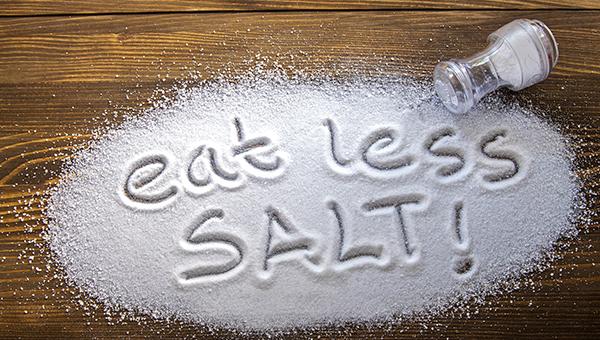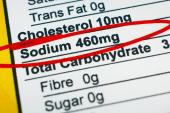FDA Issues New Guidance on Sodium Targets for Food Industry
The agency hopes aiming for 3,000 mg/day initially will get more Americans closer to healthy sodium levels.

The US Food and Drug Administration has issued its initial recommendations to the commercial food industry on reductions it would like to see in sodium levels to help consumers eat closer to official dietary guidelines.
The nonbinding recommendations are intended “to provide measurable voluntary short-term (2.5-year) goals for sodium content in commercially processed, packaged, and prepared foods to reduce excess population sodium intake, while recognizing and supporting the important roles sodium plays in food technology and food safety,” the agency says in the document posted online Wednesday. The guidance was first released in draft form in 2016.
These voluntary targets for reduction of sodium in food has the potential to save lives and improve health. It’s critical industry continue steps to reduce unnecessary use of sodium in food. This longstanding FDA commitment will provide a science based framework for these goals. https://t.co/tZ8r7g9WGs
— Scott Gottlieb, MD (@ScottGottliebMD) October 13, 2021
Rather than shooting for the 2,300 mg/day sodium limit that the Dietary Guidelines for Americans advises for individuals ages 14 and older, the FDA is telling the industry it will initially settle for a goal of 3,000 mg/day “as a gradual approach to sodium reduction in the food supply.” That’s based on evidence that average Americans, including children, consume an estimated 3,400 mg/day. According to the FDA, starting with a higher goal is part of a strategy of long-term dialogue with the food industry that it hopes will eventually lead to the lower-range sodium targets.
“I’m a little bit dismayed that it’s taken this long,” Eugene Yang, MD (University of Washington, Bellevue), chair of the American College of Cardiology’s prevention of cardiovascular disease council, said in an interview with TCTMD. He said the United States lags behind other countries, such as the United Kingdom, which initiated similar efforts 18 years ago.
“I think there was a hope that the traditional sort of national efforts to educate the population on sodium intake would have a greater effect,” Yang said. “But clearly that wasn't the case, so now we're moving forward to what I think will be a much more effective effort, which is to try to use changes through the food industry.”
Being Pragmatic About Change
In a prepared statement, the American Heart Association (AHA) said the new guidance is “an important step forward” but added that reducing daily sodium to 3,000 mg is not enough.
“Lowering sodium further to 2,300 mg could prevent an estimated 450,000 cases of cardiovascular disease, gain 2 million quality-adjusted life-years and save approximately $40 billion in healthcare costs over a 20-year period,” AHA’s statement notes.
To TCTMD, Yang cautioned that a key to successful large-scale public health changes is being pragmatic.
Why voluntary despite compelling evidence that excess sodium contributes to stroke & premature death? How about replacing a % of sodium chloride w/ potassium chloride or food warning labels?@US_FDA
— Stephen Juraschek MD, PhD (@spjuraschek) October 13, 2021
Guidance for Industry: Voluntary Sodium Reduction Goals https://t.co/3SnZcjOlvd
“We're not going to be able to make those kinds of efforts at the national level to go from 3,400 to 2,300 milligrams a day in a short period of time,” he observed. “What we really want people to go down to is 1,500 milligrams a day, but it’s not realistic. So, anything that moves the needle in the right direction is a positive step.”
In the guidance document, the FDA says while it acknowledges that small businesses may not have the resources that larger companies do for reaching the lower sodium targets, “we anticipate that these goals would ultimately be within reach for all firms, given time and the spread of innovations in food ingredients and manufacturing methods.”
The Sustainable Food Policy Alliance, which includes food industry giants like Danone North America, Mars, Nestlé USA, and Unilever United States, issued a statement saying they welcome the guidance and view it as “another opportunity for the food industry to support healthy eating by continuing to improve the nutrition profile of products.”
L.A. McKeown is a Senior Medical Journalist for TCTMD, the Section Editor of CV Team Forum, and Senior Medical…
Read Full BioSources
Food and Drug Administration. Guidance for industry: voluntary sodium reduction goals. Published on: October 13, 2021. Accessed on: October 13, 2021.
Disclosures
- Yang reports no relevant conflicts of interest.





Comments